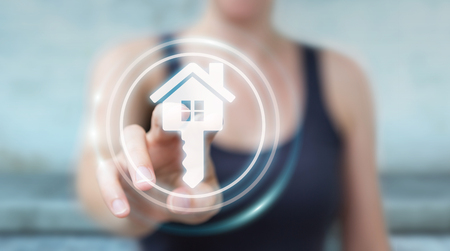Introduction to Smart Home Energy Efficiency
In the UK, where energy prices have seen significant increases and the climate demands both heating in winter and cooling during the rare heatwaves, homeowners are turning to smart home devices to curb energy consumption and trim household bills. These innovative gadgets not only bring a modern touch to British homes but also offer a practical solution to managing rising utility costs while supporting sustainability goals. By harnessing real-time data and automation, smart home technology empowers residents to tailor their energy use with impressive precision—whether it’s adjusting the thermostat from your mobile on a chilly London morning or ensuring the lights in your Manchester flat switch off automatically when not needed. Below is an overview of how these devices make a tangible difference:
| Smart Device Type | Main Energy-Saving Benefit | Typical UK Use Case |
|---|---|---|
| Smart Thermostats | Optimise heating schedules | Reducing boiler run time during mild spring weather |
| Smart Plugs | Cut standby power usage | Turning off appliances overnight in family homes |
| LED Smart Bulbs | Lower lighting costs with automation | Dimming lights automatically at dusk in city apartments |
The adoption of smart home solutions not only benefits individual households but also contributes to broader national efforts towards net zero targets. In this guide, we’ll explore the top 10 smart home devices that are transforming UK properties into more energy-efficient, cost-effective spaces.
Smart Thermostats for British Homes
The unpredictable British weather, with its frequent shifts between chilly mornings and mild afternoons, makes traditional heating routines inefficient for many UK properties. Smart thermostats have emerged as an essential device in the drive towards energy efficiency, offering both adaptive technology and intelligent design to suit the unique demands of homes across the country. These devices learn your daily schedule, adjust heating based on real-time weather data, and can even be controlled remotely via smartphone apps—ensuring warmth when you need it and savings when you don’t.
How Smart Thermostats Enhance Comfort & Savings
Unlike conventional thermostats, smart models provide precise control over your home’s temperature zones. This means no more overheating unused rooms or returning to a chilly house after a day out. Many leading smart thermostats available in the UK—such as Hive Active Heating, Nest Learning Thermostat, and Tado°—are designed specifically to integrate with British central heating systems, whether you have combi boilers or traditional radiators.
Key Features at a Glance
| Feature | Benefit |
|---|---|
| Weather Adaptivity | Automatically adjusts heating schedules in response to sudden UK weather changes |
| Zonal Control | Allows different rooms to be heated independently for tailored comfort |
| Remote Access | Control heating from anywhere using a mobile app |
| Learning Algorithms | Optimises energy use by learning your daily patterns and routines |
| Integration with Smart Assistants | Hands-free control via Alexa, Google Assistant, or Apple HomeKit |
Why It Matters for UK Properties
The fluctuating nature of British weather calls for a responsive solution. By deploying a smart thermostat, homeowners not only reduce unnecessary energy consumption but also enjoy enhanced comfort that adapts dynamically to their lifestyles. Furthermore, many UK energy providers offer incentives or discounts for installing approved smart thermostats—making this upgrade not just an eco-friendly choice, but also a savvy financial decision in the long run.

3. Intelligent Lighting Solutions
Modern UK homes are embracing intelligent lighting systems that not only elevate the ambiance but also significantly reduce electricity consumption. These innovative solutions use a blend of daylight sensors, motion detectors, and smart controls to adapt artificial lighting based on real-time conditions. By adjusting to natural daylight hours and occupancy patterns, smart lighting ensures lights are used only when needed, making every watt count for energy efficiency.
How Do Smart Lighting Systems Work?
Smart lighting systems integrate seamlessly into UK properties, responding to both the time of day and whether rooms are occupied. For example, during brighter daylight hours in London’s summer, lights automatically dim or switch off entirely, while in darker winter evenings they provide just the right level of illumination. Occupancy sensors ensure that spaces such as corridors or bathrooms are only lit when in use—no more wasted energy.
Key Features of Intelligent Lighting
| Feature | Benefit for UK Properties |
|---|---|
| Daylight Sensors | Adjusts light levels according to natural sunlight, perfect for variable British weather |
| Occupancy Sensors | Lights up rooms only when occupied, ideal for family homes and shared flats |
| Remote Control & Scheduling | Manage lighting from your mobile or set automatic schedules tailored to your lifestyle |
| Dimming Functions | Create mood lighting while using less power during evenings and social gatherings |
Popular Smart Lighting Brands in the UK
The market offers a range of reputable brands such as Philips Hue, Hive Active Lights, and LIFX—all compatible with voice assistants like Amazon Alexa or Google Home. These systems are designed to integrate with existing décor, providing both minimalist aesthetics and technological sophistication.
By combining style with functionality, intelligent lighting solutions help British homeowners save on energy bills without compromising on comfort or design. With government incentives promoting greener living, upgrading to smart lighting is both a practical and stylish choice for today’s UK property owners.
4. Smart Plugs and Energy Monitors
Smart plugs and in-home energy monitors are rapidly becoming essentials for UK households striving for better energy efficiency. These devices empower homeowners to take charge of their electricity consumption by identifying which appliances are drawing the most power, even when not in active use. By integrating smart plugs compatible with British plug types (Type G), you can remotely switch devices on or off via your smartphone, set schedules, and monitor usage patterns in real time.
How Smart Plugs Transform Everyday Living
Imagine turning off a forgotten iron from your office, or ensuring your entertainment system isn’t sapping standby power overnight—smart plugs make these small yet impactful changes easy and intuitive. Many models also feature energy monitoring capabilities, providing detailed feedback through user-friendly apps.
Comparing Popular Smart Plugs for UK Homes
| Brand | Works with Type G Plug? | Energy Monitoring | Remote Control | Scheduling Feature |
|---|---|---|---|---|
| TP-Link Kasa HS110 | Yes | Yes | Yes (App) | Yes |
| Tapo P110 Mini | Yes | Yes | Yes (App) | Yes |
| Eve Energy UK | Yes | Yes | Yes (App/HomeKit) | Yes |
| D-Link DSP-W115 | Yes | No | Yes (App) | Yes |
The Role of In-Home Energy Monitors
Complementing smart plugs, in-home energy monitors like the Loop or Sense monitor the total electricity flow through your property’s mains supply. They offer an overview of household consumption trends, helping you spot inefficiencies—perhaps an old fridge or inefficient heater drawing excess power. For UK residents conscious of both design and sustainability, many of these monitors offer elegantly designed displays that blend seamlessly with modern interiors, supporting a refined aesthetic while delivering practical insight.
Together, these technologies enable precise control over energy-hungry devices, allowing you to reduce unnecessary costs while contributing to broader environmental goals—a win for your home and the planet.
5. Automated Blinds and Window Sensors
Automated blinds and window sensors are increasingly popular smart home devices in the UK, offering both energy efficiency and aesthetic harmony with traditional British homes. These systems are designed to intelligently regulate indoor temperatures by responding to sunlight levels, occupancy, and outdoor weather conditions, thereby helping homeowners manage their heating bills more effectively.
Advantages of Smart Blinds and Window Sensors
| Feature | Benefit | Relevance to UK Homes |
|---|---|---|
| Automated Temperature Control | Keeps interiors cool in summer and warm in winter by adjusting blinds according to sunlight and temperature. | Reduces reliance on central heating systems, addressing high energy costs typical in the UK. |
| Seamless Integration | Works with existing sash or casement windows common in British properties. | Preserves architectural charm while upgrading functionality. |
| Energy Consumption Insights | Sensors monitor open/closed status and provide data on potential heat loss areas. | Enables targeted energy-saving actions for older or draughty buildings. |
| Remote & Scheduled Operation | Users can control blinds via smartphone apps or set schedules based on daily routines. | Cater to busy lifestyles and unpredictable British weather patterns. |
Aesthetic Compatibility with Traditional British Architecture
Smart blinds are now available in a wide array of fabrics, finishes, and mechanisms that suit everything from Georgian townhouses to Victorian terraces. Discreet sensor placement ensures that period features remain untouched while adding a layer of modern convenience. By complementing leaded windows or timber frames, these devices allow homeowners to embrace technology without compromising on style.
Managing Heating Bills Effectively
The strategic use of automated blinds combined with window sensors can significantly cut down unnecessary heat loss during cold months—a notable advantage given the UKs long heating season. By closing blinds at dusk and opening them during sunny winter days, homes naturally retain warmth, reducing demand on boilers and radiators. This not only results in lower utility bills but also supports broader efforts to reduce carbon footprints across UK households.
6. Integration and Compatibility with UK Home Systems
When selecting smart home devices for energy efficiency, one of the most crucial factors for UK homeowners is seamless integration with existing home systems. British properties vary widely in age and construction style, so ensuring compatibility is essential—especially with legacy wiring and commonly used infrastructure. Below, we outline key considerations for integrating smart technology into UK homes.
Legacy Wiring and Electrical Standards
Many older UK homes still operate with traditional wiring standards (such as ring circuits or single sockets without neutral wires), which can pose challenges when installing modern smart devices like thermostats, light switches, and plugs. Before purchase, check product specifications for compatibility with your property’s electrical system. Some brands offer adaptors or versions specifically designed for UK wiring. Consulting a qualified electrician can prevent installation issues and ensure safety.
Compatibility with Local Service Providers
Smart energy devices often rely on partnerships with local utility companies or broadband providers for optimal functionality—think smart meters that communicate directly with your energy supplier. Ensure the devices you choose are supported by your region’s major service providers (e.g., British Gas, Octopus Energy, SSE). This guarantees accurate data tracking and enables features like off-peak scheduling or remote monitoring via secure apps.
Popular Smart Device Ecosystems in the UK
| Device Ecosystem | Main Features | UK Compatibility Notes |
|---|---|---|
| Google Home | Voice control, automation routines, wide device support | Works well with most UK broadband; supports British English voice commands |
| Amazon Alexa | Extensive third-party integrations, energy monitoring skills | Compatible with UK plug types and voltage; supports local accents/phrases |
| Apple HomeKit | High privacy standards, seamless iOS integration | Requires compatible routers/hubs; some devices not available in UK market yet |
| Tado° (Heating) | Zoned heating controls, weather adaptation | Designed specifically for European boiler systems and radiators common in the UK |
| Shelly (Smart Relays) | No-neutral options, compact design for retrofits | Ideal for older UK homes with legacy wiring constraints |
Tips for a Smooth Integration Experience:
- Check device certifications: Look for products marked with CE or UKCA to guarantee legal use in British homes.
- Select multi-platform devices: Devices compatible with several ecosystems (e.g., Alexa & Google) offer more flexibility if you switch services.
- Prioritise firmware updates: Regular updates ensure continued compatibility as UK infrastructure evolves.
- Liaise with installers familiar with UK standards: Professional advice saves time and helps avoid costly errors.
- Test connectivity before full installation: Use manufacturer apps to confirm robust Wi-Fi or Zigbee/Z-Wave signals throughout your space.
A thoughtful approach to integration makes your investment in smart home energy devices both future-proof and harmonious with the unique requirements of UK properties.
7. Conclusion: Futureproofing UK Properties
As the UK steadily advances towards a greener future, integrating smart home devices is no longer a luxury but a strategic necessity for homeowners and landlords alike. These innovative tools do more than streamline daily living—they play a pivotal role in futureproofing British properties by enhancing energy efficiency, reducing overall environmental impact, and supporting the nation’s sustainability targets.
The Role of Smart Devices in Modern British Homes
Smart thermostats, energy monitors, and intelligent lighting are redefining how we interact with our living spaces. By providing real-time data and automated control, these devices empower residents to actively manage their consumption and make informed decisions that align with both personal comfort and national energy-saving ambitions.
Environmental Impact & National Initiatives
Adopting smart technology contributes directly to the UK’s commitment to net-zero carbon emissions by 2050. The table below illustrates how key smart devices align with government-backed sustainability initiatives:
| Device | Main Benefit | UK Sustainability Alignment |
|---|---|---|
| Smart Thermostat | Reduces heating wastage | Supports Clean Growth Strategy |
| Energy Monitor | Tracks real-time energy use | Promotes Energy Savings Opportunity Scheme (ESOS) |
| Smart Lighting | Lowers electricity demand | Contributes to Low Carbon Transition Plan |
| Intelligent Plugs & Switches | Prevents standby power loss | Aids Green Homes Grant objectives |
| Automated Blinds & Curtains | Improves insulation efficiency | Reduces need for artificial heating/cooling |
Creating Lasting Value in Property Investments
The integration of smart home devices not only lowers utility bills but also adds market appeal and long-term value to properties across England, Scotland, Wales, and Northern Ireland. With buyers increasingly prioritising eco-friendly features, early adoption ensures homes remain competitive in a rapidly evolving property landscape.
Ultimately, investing in these top 10 smart devices is an investment in both present-day comfort and the sustainable legacy of British homes—demonstrating a harmonious blend of design innovation, environmental responsibility, and future-readiness.


